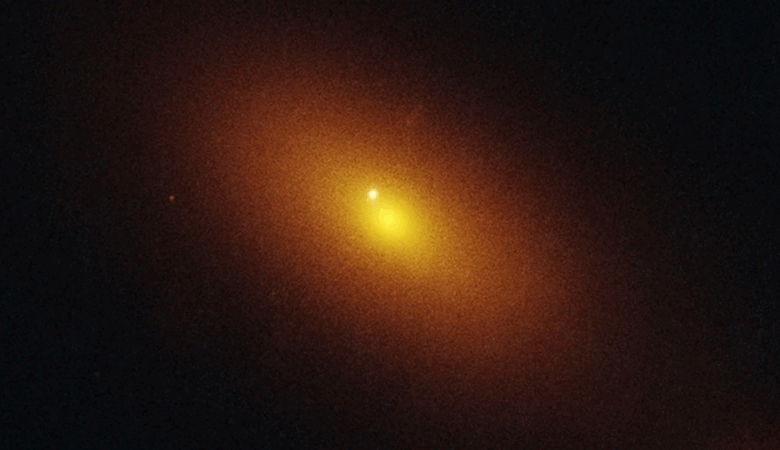Hubble spots a black hole swallowing a Sun 100 million times the size of ours
News Mania Desk / Piyal Chatterjee / 10th May 2025

In a finding reminiscent of a science fiction narrative, astronomers utilizing NASA’s Hubble Space Telescope have observed a “Space Jaws” – a nomadic supermassive black hole actually devouring a sun 600 million light-years away from our planet.
This uncommon cosmic phenomenon, referred to as a tidal disruption event (TDE) and labeled AT2024tvd, occurred not in the center of its galaxy, but unexpectedly off-center, exposing a previously concealed group of wandering black holes. The black hole, with a mass roughly a million times that of our Sun, resided in the shadowy fringes of its parent galaxy.
It only became apparent when a star wandered too near, was elongated and torn apart by the black hole’s powerful gravity—a phenomenon astronomers refer to as “spaghettification.” The remains of the star were drawn into a heated, rotating disk, releasing a dazzling burst of ultraviolet and visible light that was rapidly detected by telescopes on Earth and in space.
What distinguishes AT2024tvd is its positioning. Although the majority of supermassive black holes—and almost all previously detected TDEs—are located in the cores of galaxies, this particular one is positioned 2,600 light-years away from the galactic center. In that location, a significantly larger black hole, weighing 100 million times the Sun’s mass, reigns as an active galactic nucleus. The two black holes exist within the same galaxy; however, they are not gravitationally linked as a pair, adding to the intrigue of this discovery.
Astronomers utilized a range of observatories—such as NASA’s Chandra X-ray Observatory and the NRAO Very Large Array—to verify the source of the flare and its displaced position. Hubble’s precise observation located the TDE, while Chandra observed X-rays from the identical location, eliminating the galactic center as the origin.
“This is the first offset TDE captured by optical sky surveys, and it opens up the entire possibility of uncovering this elusive population of wandering black holes with future sky surveys,” said lead study author Yuhan Yao of UC Berkeley.






